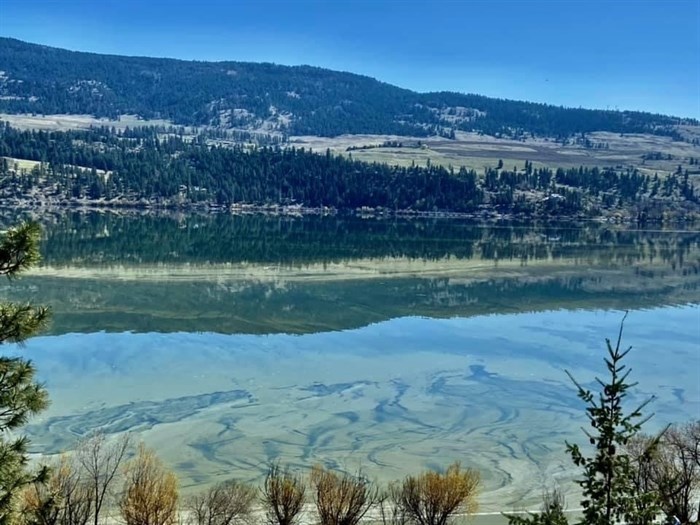
An algae bloom is seen on Wood Lake in Lake Country in this April 2021 file photo. The B.C. government has created a website to help identify algae blooms on lakes.
Image Credit: SUBMITTED/Geri Allan-Helmer
May 12, 2021 - 4:30 PM
The B.C. government has created a website to help identify algae blooms on lake.
The Algae Watch website has a submission tool that helps to identify a possible algae bloom, while aiding the province in keeping tabs on lake health, according to a news release from the Ministry of Environment and Climate Change Strategy.
“The website can help us track changes over time and identify areas of the province that are getting more algae blooms. We can then start investigating what’s causing these changes,” ministry water quality limnologist Mike Sokal said in the release.
READ MORE: Interior Health warns of potentially harmful algae bloom on Wood Lake
Algal blooms occur naturally and part of aquatic ecosystems. They are food for fish and supply oxygen to the air, but some species do have the potential to be toxic. Blue-green algae, or cyanobacteria, blooms can produce toxins harmful to humans and animals. They are a species that are particularly concerning to the lake monitoring program and health authorities.
Recently, an algal bloom was spotted on Wood Lake near Lake Country.
Out of concern for the possible blue-green bloom, Interior Health asked people to avoid swimming near the algae or drinking water directly from the lake.
The new reporting tool is an effort to engage people in "citizen science," which will help limnologists track when blooms occur and what the causes might be.
Norm Zirnhelt, the executive director of the B.C. Lake Stewardship Society, warns people to treat all algae blooms as potentially toxic to avoid risk.
"Lakes are susceptible to impacts from all kinds of human land uses and activities," Zirnhelt said in the release.
Algae blooms commonly form when there are increased nutrients, warmer temperatures, abundant light and stable wind conditions, the ministry said.
However, agricultural run-off or poorly functioning septic systems can affect the nutrient levels in the water and make a bloom more likely.
There are currently 53 lakes in the province being monitored, tracking long-term water quality and helping determine best practices to manage and protect them.
More information on how to identify and report algae blooms can be found on the Algae Watch website here.
Anyone with immediate drinking or recreational water use concerns should contact their local health authority.
To contact a reporter for this story, email Levi Landry or call 250-819-3723 or email the editor. You can also submit photos, videos or news tips to the newsroom and be entered to win a monthly prize draw.
We welcome your comments and opinions on our stories but play nice. We won't censor or delete comments unless they contain off-topic statements or links, unnecessary vulgarity, false facts, spam or obviously fake profiles. If you have any concerns about what you see in comments, email the editor in the link above.
News from © iNFOnews, 2021